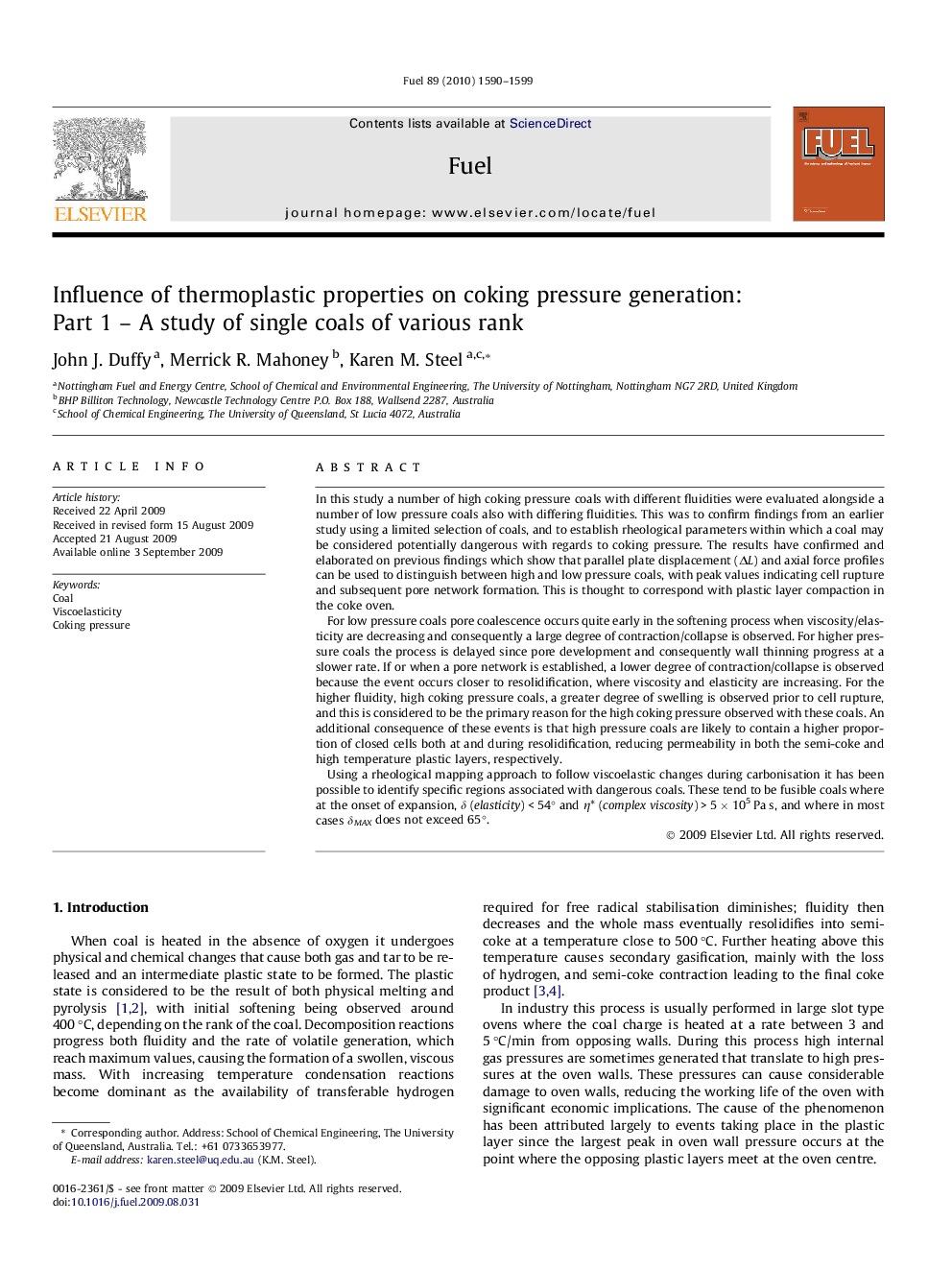| Article ID | Journal | Published Year | Pages | File Type |
|---|---|---|---|---|
| 207339 | Fuel | 2010 | 10 Pages |
In this study a number of high coking pressure coals with different fluidities were evaluated alongside a number of low pressure coals also with differing fluidities. This was to confirm findings from an earlier study using a limited selection of coals, and to establish rheological parameters within which a coal may be considered potentially dangerous with regards to coking pressure. The results have confirmed and elaborated on previous findings which show that parallel plate displacement (ΔL) and axial force profiles can be used to distinguish between high and low pressure coals, with peak values indicating cell rupture and subsequent pore network formation. This is thought to correspond with plastic layer compaction in the coke oven.For low pressure coals pore coalescence occurs quite early in the softening process when viscosity/elasticity are decreasing and consequently a large degree of contraction/collapse is observed. For higher pressure coals the process is delayed since pore development and consequently wall thinning progress at a slower rate. If or when a pore network is established, a lower degree of contraction/collapse is observed because the event occurs closer to resolidification, where viscosity and elasticity are increasing. For the higher fluidity, high coking pressure coals, a greater degree of swelling is observed prior to cell rupture, and this is considered to be the primary reason for the high coking pressure observed with these coals. An additional consequence of these events is that high pressure coals are likely to contain a higher proportion of closed cells both at and during resolidification, reducing permeability in both the semi-coke and high temperature plastic layers, respectively.Using a rheological mapping approach to follow viscoelastic changes during carbonisation it has been possible to identify specific regions associated with dangerous coals. These tend to be fusible coals where at the onset of expansion, δ (elasticity) < 54° and η* (complex viscosity) > 5 × 105 Pa s, and where in most cases δMAX does not exceed 65°.
